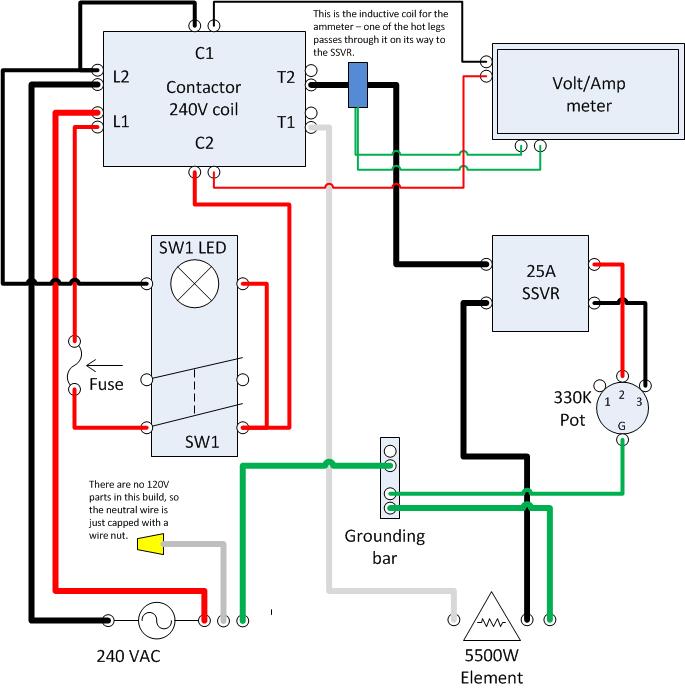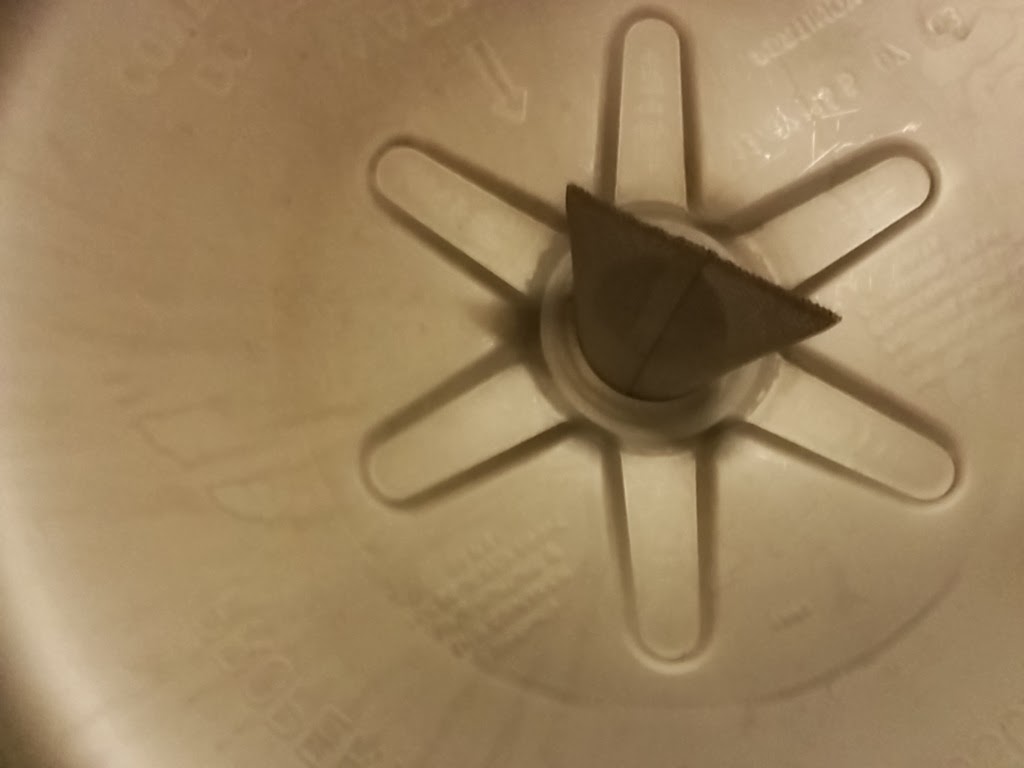There are two aspects of my new rig that concerned me. First was maintaining a relatively constant mash temperature without heating/recirculating and without using a basket insert. Second was trub management. I've discussed both briefly in this thread, but if I'm being honest they are the two areas that seemed likely to cause me some trouble.
So, here's how things shook out on my first brew day.
Based on dry grain temperature of 72F and aiming for a mash temperature of 152F, I heated 8.5gal of strike water to 158F. I then killed the element, added the bag and doughed-in, stirring well. When I was satisfied that there were no more clumps, I put the lid on and only then glanced at the thermometer, which now read 144F!
I pulled the top of the bag down around the outside of the kettle (to raise the bottom of the bag inside). I then turned the element on about halfway (~11A) and stirred every few minutes while the temp came back up. Within 15 minutes, I was back at 152F. I left the element on very low (about 2.0A), and settled back to enjoy a Kiltlifter clone (thanks, Scottland) for the remainder of the 60-minute mash.
The temperature remained constant for the next 58 minutes or so. As I was rummaging around on the other side of the garage for a suitable container for my spent grains, the alarm on my thermometer (which was still set at 158F) went off. By the time I got back to the kettle it was in the mid 160's and climbing rapidly. WTF?
I killed the element, opened the lid, and everything looked okay. I removed the temperature probe (I'm using one of those remote oven/BBQ thermometers with a wired probe) gave it a quick stir, and then reinserted the probe ... 240F! Obviously a problem with the thermometer. I checked with my Thermapen and the temp was actually 150F.
As all of this nonsense occurred at the very end of my planned 60 minute mash, I raised the bag and took a refractometer reading (9.0 Brix, 1.036 SG). That seemed a bit low, and while I had not planned to do a mash out (in theory, it shouldn't be necessary), I thought maybe it would help me recover a bit more fermentable sugar.
So I turned the heat on high and stirred frequently until the temperature reached 170F, killed the heat and lowered the bag back in. I stirred a few times over the next 10 minutes. I then raised it again and let it drain while applying full heat for the boil. I squeezed the bag well. At this point, I measured 8 gal in the boil kettle at 10.6 Brix (1.043 SG), which made me feel a little better.
Fifteen minutes after applying full heat, boil started. I wanted to end up with around 5.5 gal of usable wort at the end of the boil: 5 gal or a bit more into the no-chill corny, plus a good liter for the yeast starter. That meant I needed to boil off about 2 gal during the 90 minute boil. During my "wet run" with plain water, I measured my boil-off rate at around 1 gal per hour, so I set the heat for a somewhat aggressive rolling boil (13.0A).
Everything went well during the boil. A total of 3oz of pellet hops were added in several additions, with a half-tab Whirlfloc 5 minutes before flameout. After killing the heat, I covered the kettle and let it stand for 15 minutes to settle.
I drained the first 8-12oz or so into a separate container to be discarded (this includes 5oz that was trapped in the bottom drain plumbing). I then fitted a piece of silicone tubing to the drain valve and started draining into a sanitized corny keg through a paint strainer. This went reasonably well, but slowly (about 45 minutes to drain 5 gal). When the corny was as full as I wanted (right to the top seam), I removed the tubing and strainer back to a sanitized 1 gallon container to collect the starter wort. Surprisingly, the bag was completely empty, which meant that the improvised stainless steel mesh strainer I had fashioned and inserted into the drain opening (in the bottom of the kettle) did its job well.
Too well, in fact ... by this time, the flow from the kettle was basically stopped. I reached into the bottom of the kettle with a sanitized rubber glove and dislodged the filter screen. I was then able to easily drain the kettle completely, and collected a good liter and a half of starter wort (and ball of hop and break material the size of a nerf football in the strainer bag).
I let the starter wort settle a bit more while I cleaned up, then poured off the top liter into my starter flask. When it reached 75F, I pitched a vial of WLP001 and let it stir overnight.
Start to finish, I little over 4.5 hours. Lessons learned, and things to do differently:
- As the strike water reaches the target temperature, I'll give it a good stir, which I neglected to do this time. It will be interesting to see of the temperature swings a lot, or if it's relatively uniform due to convection.
- Depending on the results of the previous step, I may add an extra 1-2F to my strike temp.
- Take care to keep my thermometer probe from being submerged in wort beyond the end of its shroud. I'm pretty sure this is what caused the thing to go nuts at the end of the mash.
- Get a better thermometer, and maybe add a long thermowell to my kettle lid.
- Consider a much shorter mash period (like, 20-30 minutes, or even less). I've read several posts lately that seem to indicate that conversion is essentially complete after the first 10 minutes or so. This could be huge as it would greatly help with my goal of not messing with heat during the mash.
- Learn about, and get whatever is needed to do an iodine test (to determine whether conversion is complete).
- Determine my refractometer's "Wort Correction Factor" according to the procedure recommended by Brewer's Friend.
- Rethink my approach to trub management. My little trub screen worked okay, but definitely got plugged up at the end. I think I'll try HawkATP's inverted kitchen strainer idea first as I like the idea of letting the hops float free in the boil. If that doesn't work well enough, I'll try adding the hops to a paint strainer. I really need to keep as much of the hops/trub/spooge as I can out of the fermenter (a slim quarter Sanke), but that's another post.
- Consider collecting the starter wort first so that it can start cooling and be ready for pitching sooner.
Just for completeness, here are a couple of pics of my rather inadequate attempt at fabricating a trub filter out of some 30-mesh stainless fabric. It's surprising sturdy and very simple, but ... didn't work as well as it needed to.
















